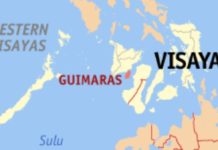
ILOILO City – As rice crops in Western Visayas – one of the country’s top rice-producing regions – approach maturity, the Department of Agriculture (DA) is urging immediate interventions to avert potential production losses, following a recent spike in pest and disease incidence across the region’s paddies.
Pest and disease infestations could severely impact regional food security.
Data from the May 2025 Regional Rice Pests and Disease Monthly Bulletin of the DA’s Regional Crop Protection Center (RCPC) revealed increases in whitehead damage and brown spot infection in 26 monitored sites with standing rice crops.
The whitehead injury rate rose to 3.27% this month, while brown spot disease incidence nearly doubled from 1.7% in March to 3.05%, making it the most prevalent rice disease in the region.
“These emerging pest patterns call for urgent and targeted responses,” the RCPC warned, emphasizing that whitehead and brown spot have been most destructive during critical growth stages, particularly heading and maturity.
Western Visayas, known for its vast rice lands in Iloilo, Capiz, Antique, and Aklan, supplies a significant portion of the nation’s rice. A disruption in its output due to pest outbreaks could have ripple effects on both local and national rice availability and prices.
Other threats are also on the rise. The bulletin noted a rise in bacterial leaf streak, now at 2.5% incidence, while other common threats such as brown plant hopper, green leafhopper, rice black bug, and rice bug remained below 1%.
Though diseases like sheath blight, bacterial leaf blight, and neck blast appeared stable, their continued presence warrants close surveillance also.
Compounding the problem is the region’s weed cover, which stands at 9.68% — almost double the 5% threshold beyond which yield losses become more likely.
The RCPC noted that weeds serve as alternate hosts for pests and create microhabitats that further heighten infestation risks.
Rodent damage remains minimal at 0.48% but should not be overlooked, DA stressed.
The monitoring is part of the RCPC’s Pest and Disease Risk Identification and Management (PRIME) initiative, which seeks to provide timely and science-based advisories to rice farmers, LGU extension workers, and other stakeholders.
With many rice fields nearing harvest, the RCPC stressed that timely pest control and integrated weed management strategies are crucial to securing stable rice production for the region./PN





